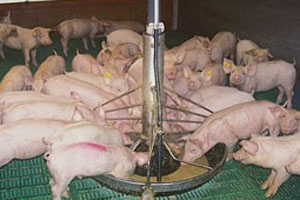Increasing raw material prices addressed

To support customers in their daily fight to cope with increasing raw material prices, Kemin organised a series of panel discussions around the Europe, Middle East and Africa (EMEA) region with industry specialists to discuss solutions and coping strategies for rising raw material prices.
Throughout the past months, attendees gained insights into some of the nutritional tactics that can be utilised to ensure that valuable nutritional ingredients are efficiently digested and absorbed by animals.
“It is widely accepted that the profitability of animal production requires feed, a major expense, to be utilised by the animal as efficiently as possible,” said John Springate, president of the animal nutrition and health division of Kemin in Europe. “To stay abreast of nutritional challenges, we organized these panel discussions because so many raw materials, including oils and fats, despite being an excellent energy source, have become very expensive over the last several years and strategies for cost-effective diet formulation can be an important tool for everyone.”
Digestion and absorption of feed was a key topic because of its paramount importance to animal nutrition. Animals eat many molecules they cannot digest, such as non-starch polysaccharides, which can generate digestive stress in the animal, resulting in poor utilisation of other nutrients. This topic introduced much discussion among panelists and attendees:
• Professor Geert Janssens from Ghent University opened the discussion with an insight on the nutritional tools to optimize fat metabolism, stressing the links between the different metabolic pathways, required biochemical co-factors and their role and contribution for an efficient fatty acids combustion and optimal fat utilization by the animals.
• Dr. Mauro Di Benedetto, DMV, from the Kemin animal nutrition and health division in Europe, highlighted the process of fat digestion from the emulsification step to the absorption. The effect of nutritional strategies based on Lysoforte to support fat digestion was discussed. Lysoforte is flexible nutritional tool which can be used for all animal species. New data on the effect of Lysoforte in swine and its efficacy to optimize fat digestion were presented.
• Dr. Barragan, DMV, based in Spain, helped the audience rethink nutrition by bringing to the discussion several aspects of animal nutrition that can impact animal profitability, such as enzymes, raw material quality or gut health and how inevitably these contribute to the variation that will always exist in the farm performance.
At the end of the panel discussion, all industry specialists agreed that in today’s increasingly challenging production environment, optimizing animal nutrition for profitability is critical. Today’s increasing raw material prices require a judicious use of a range of nutritional tools to ensure the optimal digestion and absorption of nutrients.
Kemin intends to bundle the panel discussion and solutions in a book that is scheduled to be published at the beginning of 2013.







